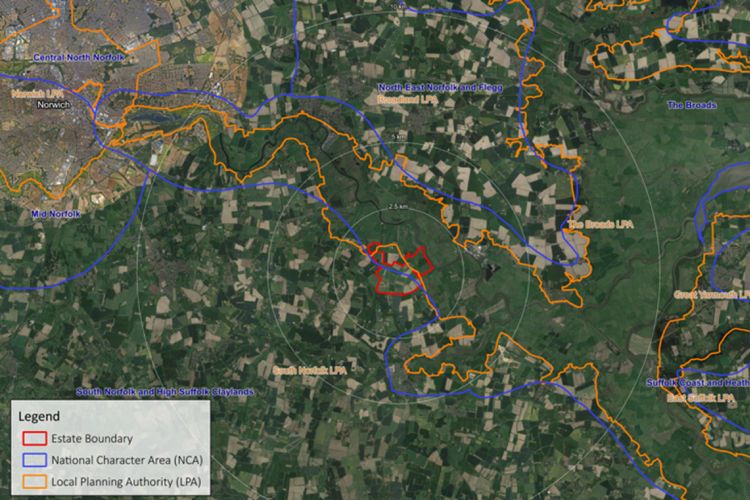LAEP straddles two LPAs and two NCAs:
- The Broads
- South Norfolk Council
- NCA 80: The Broads
- NCA 83: South Norfolk and High Suffolk Claylands
LAEP straddles two LPAs and two NCAs:
LAEP is adjacent to seven LPAs and six NCAs:

Designated a National Priority Focus Area by Natural England, the Langley Abbey Estate is strategically located to provide significant habitat connectivity and maximise nature recovery across the Broads and South Norfolk.
Located within an Environmentally Sensitive Area, a Biodiversity Enhancement Area, and a Sub-Regional Green Infrastructure Corridor, LAEP lies amongst a raft of other nationally and internationally designated sites, including:
Special Area of Conservation (SAC)
Special Protection Area (SPA)
Ramsar Site
National Nature Reserve (NNR)
Site of Special Scientific Interest (SSSI)
Important Bird Area (IBA)
Important Invertebrate Area (IIA)
Important Plant Area (IPA)
County Wildlife Site (CWS)
Ancient Woodland Inventory
LAEP lies entirely within Natural England’s Habitat Network, spanning all four zones:
